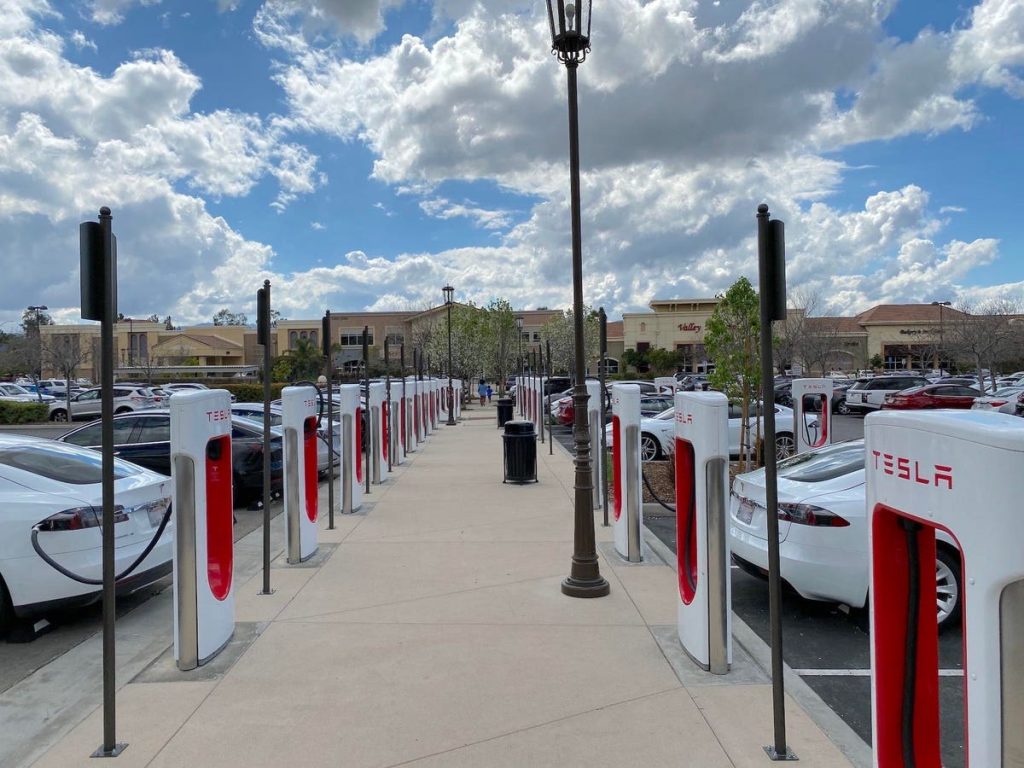Electric vehicle batteries aren’t built to withstand constant fast charging. Here’s what you should know.
I talked to a rideshare driver and two experts on the topic of excessive fast charging.
Backdrop: The driver, Dobson Omene, runs a transportation service in Atlanta, Georgia. His Model 3 battery died after 120,000 miles. At the time of the failure, he typically used a Tesla Supercharger — generically referred to as a fast charger — twice a day.
Omene knew something was wrong when the range on his Model 3 dropped suddenly from 170 miles to 35 miles. Long story short: Tesla replaced his battery but at a cost of $9,000 because he was out of warranty.
“The problem is you have a lot of rideshare drivers who have switched from a gasoline car to a Tesla” because of the promise of saving money on gas, Omene told me in a phone interview.
His experience was originally documented on a Tesla enthusiast YouTube channel (video at bottom).
I asked Tesla for comment but did not get a response.
Below two experts weigh in on excessive use of Superchargers.
Sandy Munro, who heads consultancy Munro & Associates: “That type of cycling will definitely kill a battery,” Munro said, referring to constant discharging and charging of batteries.
“Battery degradation happens for a lot of different reasons but mostly it’s cycling,” Munro said. “I think he cycled it to death.”
Home charging is best, Munro says. “Charging at home with a Level 2 charger…batteries like that the best,” he said. Level 2 is a slow charge and it typically takes several hours or more to charge a battery using level 2 chargers.
—Upshot: fast charging is fine when you’re traveling or don’t have immediate access to a home charger. But it’s best to charge at a level 2 charger or at home.—
“The higher the charge is, then things start to happen,” he said. Fast chargers used by Tesla and Electric America can charge at rates above 200kW while a level 2 charger typically charges no faster than 19kW.
Conditioning is also important.
“Conditioning the battery makes a big difference,” Munro said. In extreme heat or cold a battery needs to be preconditioned before charging. Not doing this could eventually cause problems. “It’s just like the guy who doesn’t want to change his oil.”
Typically, electric cars have software settings — often set remotely via an app — that allows you to precondition the battery before charging or, for example, before traveling on a cold morning.
And setting high and low charging limits matters too.
“80% as the high end and 20% as the low end. Batteries like that a lot. Don’t charge past 80 don’t go below 20,” Munro said.
Sandy Munro has a point about oil changes. Taking care of your car battery is analogous to changing the oil on a gas car. If you don’t maintain your battery, the possibility of it failing increases.
Dr. Bharat Balasubramanian, Executive Director Center for Advanced Vehicle Technologies, College of Engineering, University of Alabama. Dr. Balasubramanian spent 38 years in research and development with Daimler-Benz AG in the Mercedes-Benz Cars Division:
“Somewhere around 4c [charging rate] the battery starts getting permanent damage,” Dr. Balasubramanian said. The rate of 4c refers to fast charging rates where a car gets a full fast charge quickly.
“If you charge it at 110 kilowatts, you will be charging it at 1c. If you charge it at 220 kilowatts, you’re charging it at 2c…and so on,” he said.
Balasubramanian said EV owners today rarely charge above those rates. But in general constant fast charging is not a good idea, he said.
“No one really knows how much damage the battery is going to take if you constantly fast charge but certainly it is going to get damaged,” Dr. Balasubramanian said.
Another problem when trying to pinpoint charging damage is that the evidence is, on the whole, anecdotal, Balasubramanian says.
“No one is going to be able to offer you real scientific evidence because if you want to do all these degradation studies, you have to do it scientifically in a large statistical patch,” he said.
“And by the time you finish all this, the battery chemistry has moved on to something else. So whatever you produce, someone else is going to say, no, we have changed the chemistry.”
“But, again, if you fast charge twice a day, I can certainly say you are asking for trouble,” Balasubramanian said.
Recurrent Study: Recurrent studied fast charging on over 12,500 Tesla vehicles in the U.S. to learn if the software and safety mechanisms in the battery management system (BMS) prevent damage to the battery.
The upshot of the study is that “occasional fast charging is fine.”
While the Recurrent study saw little difference in degradation between batteries that rarely get fast charged and those that frequently get fast charged, the study did caution that fast charging is best in “small doses.”
Read the full article here










